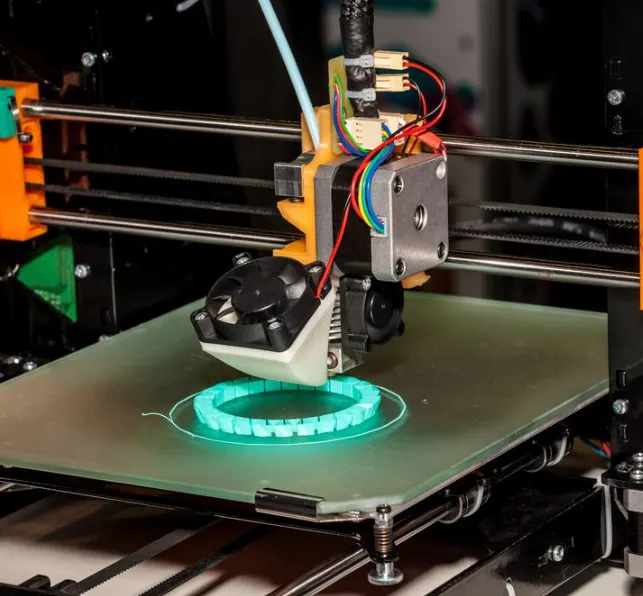In recent years, rapid prototyping has become a crucial tool for product development across various industries. Among the different techniques available, subtractive rapid prototyping (SRP) stands out for its ability to produce highly durable and precise parts in a relatively short time. This process is gaining traction among manufacturers who aim to streamline their production timelines and reduce costs. In this article, we’ll explore subtractive rapid prototyping, how it differs from additive manufacturing, and when it’s best applied.
What is Subtractive Rapid Prototyping?
Subtractive rapid prototyping is a method used by engineers and manufacturers to quickly create prototypes by removing material from a solid block. Unlike traditional manufacturing methods, which can be slow and labor-intensive, SRP uses modern tools like CNC machines to automate the process, ensuring faster production and higher accuracy. Think of it like carving a sculpture from a block of stone, but instead of manual tools, advanced software and machinery are used to shape the material.
SRP allows businesses to refine designs more efficiently and produce functional prototypes in record time, which can significantly reduce time to market. The technique also helps companies save on development costs by minimizing waste and improving material usage.
How the Subtractive Process Works
The subtractive prototyping process typically involves three key steps:
- Design Creation: Engineers start by designing the prototype using computer-aided design (CAD) software. This 3D model will serve as the blueprint for the prototype.
- Machining Setup: Once the design is ready, the CAD data is transferred to a CNC machine, which is programmed to follow the design’s specifications. The machine is equipped with various tools to perform the necessary cuts, drills, and other processes on the material.
- Material Removal: The CNC machine begins removing material from the block, using precise techniques like milling, drilling, or laser cutting to shape the final product.
This process is ideal for creating highly accurate and functional prototypes, especially when the material and dimensions need to closely resemble the final product.
Industries Using Subtractive Rapid Prototyping
Subtractive rapid prototyping is commonly used in several industries where precision and strength are crucial:
- Automotive: SRP helps automotive manufacturers quickly design and test components such as engine parts and vehicle body components. This method is especially valuable when multiple iterations and functional testing are needed.
- Medical Devices: Medical companies use SRP to create prototypes of devices such as orthopedic implants, dental prosthetics, and surgical tools, ensuring that the designs are both functional and compatible with specific patient needs.
- Molds and Dies: SRP is ideal for creating molds and dies used in manufacturing processes such as injection molding or die casting. These components require high precision, making subtractive methods a perfect choice.
Subtractive vs. Additive Manufacturing
While both subtractive and additive manufacturing are used for rapid prototyping, the processes differ significantly.
In subtractive manufacturing, you start with a solid piece of material (metal, wood, or plastic) and remove portions of it to create the desired prototype. This approach is particularly suited for creating durable and functional prototypes that closely match the final product’s materials and performance.
Additive manufacturing, on the other hand, builds objects layer by layer using materials like plastic or metal. 3D printing is a typical example of additive manufacturing, and it allows for more complex geometries and rapid prototyping of designs. However, additive processes might not achieve the same level of material strength or surface finish quality as subtractive methods.
Key Differences Between Additive and Subtractive Prototyping
| Aspect | Additive Prototyping | Subtractive Prototyping |
|---|---|---|
| Process | Builds objects layer by layer | Removes material from a solid piece |
| Material Options | Limited to materials that can be 3D printed (plastics, resins) | Can use a wide range of materials, including metals, wood, and polymers |
| Design Complexity | Can handle complex geometries, including internal voids | Limited in handling intricate internal structures |
| Surface Finish | Typically rough, may need post-processing | Can achieve smooth finishes with little to no post-processing |
| Cost | Generally more cost-effective for small batches | Can be more expensive due to material waste and machine time |
When to Use Subtractive Rapid Prototyping
Subtractive rapid prototyping excels in situations where precision, material properties, and surface finish are key concerns. Here are some scenarios where SRP is particularly beneficial:
- High Precision: For industries like aerospace or medical device manufacturing, where tolerances are tight and high-precision components are needed, subtractive rapid prototyping is the ideal choice.
- Surface Finish Quality: If the prototype requires a high-quality surface finish that will be similar to the final product, SRP allows for greater control over the finishing process.
- Durability Testing: When prototypes need to undergo rigorous testing in real-world conditions, it’s best to create them using the final product’s material. Subtractive techniques can work with a range of materials that mirror the product’s strength and functionality.
- Late-Stage Development: In the later stages of product development, when the prototype needs to be built using the same materials as the final product, subtractive manufacturing often takes over from additive methods.
When to Opt for Additive Manufacturing
While subtractive rapid prototyping is excellent for certain applications, additive manufacturing offers unique advantages. Here are scenarios where additive techniques are preferable:
- Complex Geometries: Additive manufacturing is the go-to option for prototypes with intricate designs, internal channels, or organic shapes that would be difficult or impossible to achieve with subtractive methods.
- Speed in Early Development: Additive processes are faster and more cost-effective when developing early-stage prototypes or testing different design iterations without needing to invest in complex machinery.
- Small-Batch Production: Additive manufacturing is ideal for small-scale, custom orders, such as personalized medical devices or limited-edition product releases, without requiring large investments in tooling or infrastructure.
Conclusion
Subtractive rapid prototyping offers significant advantages for industries that require precision, durability, and high-quality finishes in their prototypes. While it’s best suited for late-stage development, high-precision tasks, and rugged product testing, it’s important to recognize that additive manufacturing still has its place in creating complex geometries and rapid early-stage prototypes. By understanding the strengths of both approaches, businesses can select the most effective prototyping method for their specific needs.







